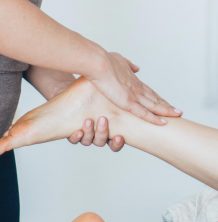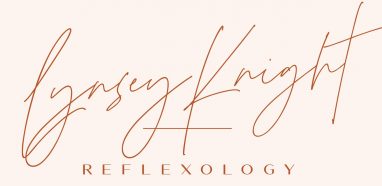What is Reflexology?
Reflexology is a non invasive, supportive and holistic complementary therapy based on the principle that reflexes in the feet, hands, face and ears correspond to different areas of the body. The practical application of reflexology involves specific and precise techniques being applied to reflexes on the feet, hands, ears or face, relaxing the body and stimulating it's own innate healing potential, working to restore homeostasis, the delicate balance needed to support optimum health and wellbeing.
Each treatment is client specific and takes into account both the physical and non-physical factors that may be having an effect on general health and well being. With many health problems being linked to nervous stress and tension, reflexology provides a natural 'whole body' support by providing the following benefits:
* Relaxation
* Improved sleep
* Improved mood
* Tension relief
* Enhanced wellbeing

Treatment and After Care
What can I expect from a treatment?
Treatment:
Treatment begins with an in depth, confidential consultation, intended to gather important information about you, your health, medical history and what you would like to gain from your appointment. This enables me to create a bespoke treatment tailored to your personal needs.
Once consultation is complete and any questions have been answered, you are gently reclined and covered with a blanket to keep you warm and comfortable. Depending on the reflexology treatment chosen, I will then apply massage techniques and work specific reflexes of the face, hands or feet while you drift off into a state of deep relaxation. Once treatment is complete, there will be plenty of time to discuss any findings or sensations that you may have experienced. Self help exercises and follow up treatments can also be considered here.
After Care:
Maximise the benefits of your treatment by doing the following, where possible:
- Drink plenty of water (This helps to eliminate toxins from your body)
- Avoid heavy meals and caffeinated drinks such as coffee, tea or cola for 24 hours
- Enjoy light or moderate exercise but avoid anything too strenuous for 24 hours
- Avoid cigarettes and alcohol for 24 hours
- Eat a varied nutritious diet
- Relax
- Make a note of how you are feeling
The products and services provided by Lynsey Knight Reflexology DO NOT diagnose, treat or claim to cure any medical condition. The information provided on this website, express or implied, is for the purpose of information only and is not intended as professional medical advice, a means of diagnosis or treatment, nor is it intended to be a substitute thereof. It is totally against the advice of any suitably qualified reflexologist to discontinue any medical treatment or advice being administered by qualified medical professionals.
If you have a health problem, are concerned about any aspect of your health or have a general health question, consult your medical professional.
History of Reflexology
Used as a healing tool for over 5,000 years, the earliest example of what is believed to be reflexology, is in the form of a wall painting, found in an Egyptian physician's tomb. The painting depicts two figures giving what seems to be a form of reflexology to two patients. One practitioner working on the feet, the other on the hands. Translated hieroglyphs are said to read the patient requesting ‘Do not hurt me’ the practitioner replying ‘I shall act so that you will praise me’
Zone therapy was the precursor to modern reflexology. Reborn through the work of William H Fitzgerald (1872 – 1942) Fitzgerald, an Ear, Nose and Throat specialist, discovered that applying pressure to the tops of fingers using metal clamps and winding elastic bands around the middle section of each finger created an anaesthetic effect on the facial area. Fitzgerald called his work ‘zone analgesia’ (through finding that by implementing the above practice he was able to complete simple ear, nose and throat surgical operations without the need for anaesthesia) and was responsible for formulating the first chart showing longitudinal lines of energy radiating through the body. He called these Zonal pathways.
Having written numerous articles on his area of interest ‘applying pressure to relieve pain’ Dr Fitzgerald and another Dr, Edwin Bowers produced a book together in 1917. The book was given the title ‘ Relieving pain at home’ - its foreword read ‘Humanity is awakening to the fact that sickness, in a large percentage of cases, is an error of body and mind’
The Zone Therapy to Reflexology progression was brought by Eunice D Ingham. Now referred to as 'The mother of reflexology' Eunice Ingham was a physiotherapist who worked alongside Dr Riley, a physician who happened to be a great believer in Fitzgerald's work. Ingham became fascinated by the idea of zone therapy and as a result started developing her foot reflexology theory in the early 1930s. Having the opportunity to treat hundreds of patients, she rigorously checked each and every reflex and mapped reflex points working on the basis that specific isolated areas within those zones would stimulate particular organs and glands within the body. The foot maps created by Eunice Ingham form the basis of modern Western reflexology today.
Reflexology was brought to the UK in 1966 by Doreen Bayley, who trained under Eunice Ingham in America.
